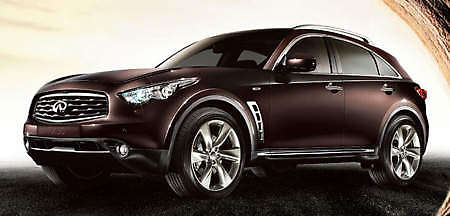
Infiniti, Nissan’s luxury marque, is a young brand in the European scene, and is currently still in the process of creating brand awareness and starting up operations. Infiniti’s current Euro range consists of its crossovers and the G family of cars, but to make proper inroads in Europe, one needs a diesel, and for a brand which counts America and the Middle East as main markets, Infiniti has none, until now.
Calling it “phase two of the quiet assault on the European luxury car market” Infiniti has developed a 3.0-litre V6 diesel, the first in the brand’s 20 year history. It will initially be available in both the EX and FX crossovers and the M large sedan, which will make its debut this year. “Although we did investigate the possibility of adapting an existing large capacity diesel for Infiniti, we quickly established that nothing on the market met our exacting requirements,” said Jim Wright, VP of Infiniti Europe.
Designated V9X, the new V6 diesel is built in France and will also be used in Renault and Nissan cars. The direct injection Euro 5 engine produces 235 bhp and class-leading torque output of 550 Nm. As a comparison, BMW’s 3.0d engine makes 245 bhp and 540 Nm. Peak torque is achieved from 1,750 rpm all the way to 2,500 rpm, while as much as 500 Nm is available from just 1,500 rpm. Infiniti says that idle speed is exceptionally low at 650 rpm “with none of the NVH usually associated with a diesel”. It will be paired to a seven-speed auto standard on both crossovers.
Interestingly, Infiniti did not use aluminium or cast iron for the engine block, but Compacted Graphite Iron. CGI is said to offer all the benefits of cast iron and more – it has higher levels of stiffness and noise absorption – but without the weight penalty. And while CGI is heavier than a pure aluminium block, Infiniti says there is no need to add stiffening ribs or extra sound deadening material so the weight gain is comparatively modest. The V9X has the lowest vibrations of all benchmarked engines, according to the Renault-Nissan Alliance.
To adapt the EX and FX to the diesel engine, they get new front subframes, different front bumper designs to enhance air flow as well as redesigned sheet metal within the engine bay to house additional radiators.